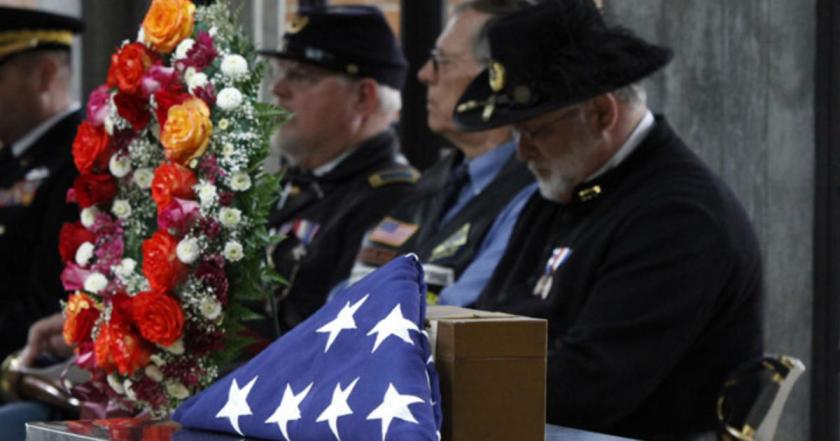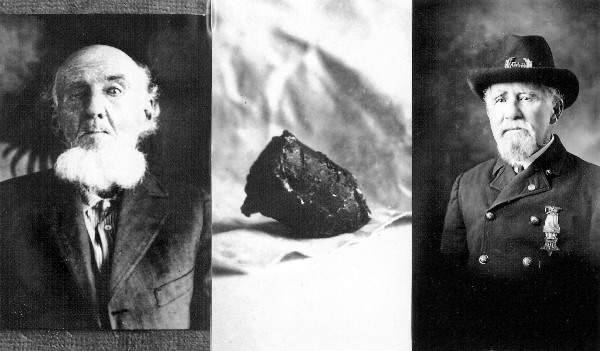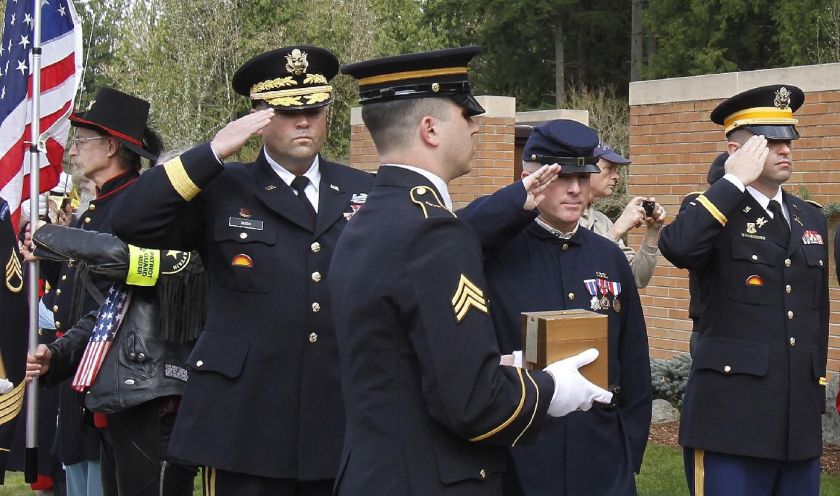The past met the present that April Friday, seven short years ago. Re-enactors dressed and equipped for another age, leading the hearse carrying twin gold boxes down roads lined with Patriot Guard riders. There the blue sack coats and slouch hats of another era met the black berets and service caps, the crisp, midnight blue of the ASU, the modern “dress blues” of the United States Army. There were uniforms new and old, veterans and historians and children and throngs of the curious, with cell phone cameras.
The last veteran of the Civil War was being laid to rest. That doesn’t even begin to tell the story.

Willis Meadows was nineteen in the spring of 1862, joining his brothers and cousins in Company G of the 37th Alabama Volunteer Infantry, assigned to the western front along the Mississippi and defending what he would have described as the “War of Northern Aggression”.
On July 1, 1863, the Union armies of General US Grant made the final drive on the “Gibraltar of the Mississippi”, the fortified strong point of Vicksburg.
Meadows watched the oncoming blue uniforms, the sharpshooter sheltered behind the iron boiler plate, picking off his enemy through a hole in the iron.
Peter Knapp was 21 that day, approaching from the east with three other Union soldiers from Company H of the 5th Iowa Volunteer Infantry. Their job was to take out Confederate snipers. Knapp spotted Meadows firing from his shelter and took aim, firing at that peephole. Willis Meadows fell over with blood running down his face, the bullet entering through his eye and coming to a rest, near his brain.
The battle moved on leaving Meadows where he lay. There was no question the man was dead, except, he wasn’t. Federal troops picking up the dead afterward discovered this one, still breathing. Union surgeons probed for the bullet with no success before deciding to quit. Such a procedure was far too dangerous. Meadows was placed on a POW ship and later paroled to a Confederate hospital where he spent the rest of the war, first as a patient and later as nurse’s aid.
Knapp was captured a few months after Vicksburg and held in a number of Confederate POW camps, including the dread hell on earth known as Andersonville.
After the war, Meadows returned to the farm in Lanett Alabama, just over the Georgia state line. He later married though the marriage bore no children and may have died in obscurity, except it wasn’t meant to be.
Knapp farmed for a time in Michigan and married in 1887 before moving to Kelso, Washington.
The decades came and went. The assassinations of three Presidents. The panic of 1893. The War to end all wars. Willis Meadows was seventy-eight this day in 1921, when he began to choke. He grasped his throat with both hands as violent spasms wracked his old body. The fear that this was the end turned to certainty as the lights began to dim, and then the object flew from his mouth and clattered across the floor. It was that bullet, lodged in his head nigh on sixty years.
The “Coughs Up Bullet” story was national news in 1921. Eleven years later, the “Ripley’s Believe It or Not” cartoon was published in 42 countries and 17 languages.

Mr. Ripley missed the most surprising part.
The story came and went with the next twenty nine years, until one Henry Kilburn brought a diary to the attention of a Washington state newspaper editor, in 1950. Seems Kilburn’s family fell on hard times and the Knapp family, childless, adopted Kilburn’s sister, Minnie Mae.
It was Mae Knapp who gave that diary to her brother. It was Peter Knapp’s diary.
Peter Knapp had seen that story back in 1921 and realized, he had to have been the man who fired that bullet. The pair met months later and compared stories. It was true. As young men, these two had been mortal enemies, each bent on killing the other. Now as aging veterans, the pair spent their last years exchanging family photographs and wishing the other, continued good health.
Alice Knapp of Nehalem Oregon was the child of another era, a woman born into the age of DNA who loved to study genealogy. Alice was investigating her husband’s roots in 2009 when she came upon Peter’s story, now dead some eighty-five years. Inquiring as to where the man had been buried, Alice was stunned to learn that he wasn’t. Even more astonishingly, neither was his wife, Georgianna. Childless, the cremated ashes of the couple were sitting on a storage shelf, unclaimed and forgotten all those years.
Alice explained, “I felt the ashes had to be buried or at least scattered somewhere. Not sitting in some storage locker.”

In April 2012, CBSnews.com reported:
“The Sons of the Union Veterans of the Civil War performed a ritual for the dead based on a Grand Army of the Republic ceremony from 1873. The funeral also included a bagpiper playing “Amazing Grace,” a bugler…performing “Taps,” and the laying of wreaths. Following a musket salute, a folded U.S. flag was presented to Alice Knapp”.
So it is the last known veteran of the Civil War was laid to rest, only seven short years ago. 151 years to the day, following the Confederate victory at Fort Sumter.



You must be logged in to post a comment.